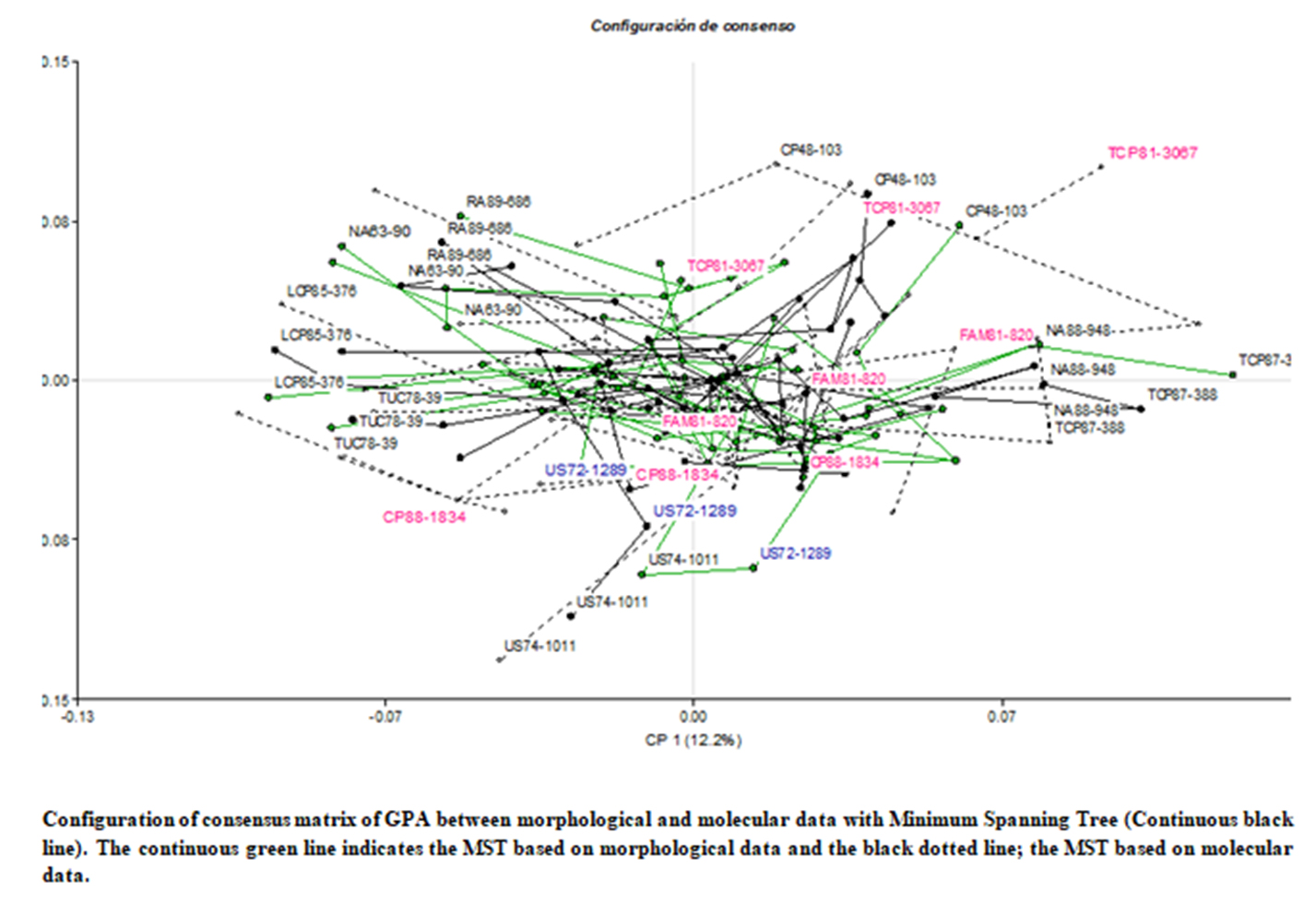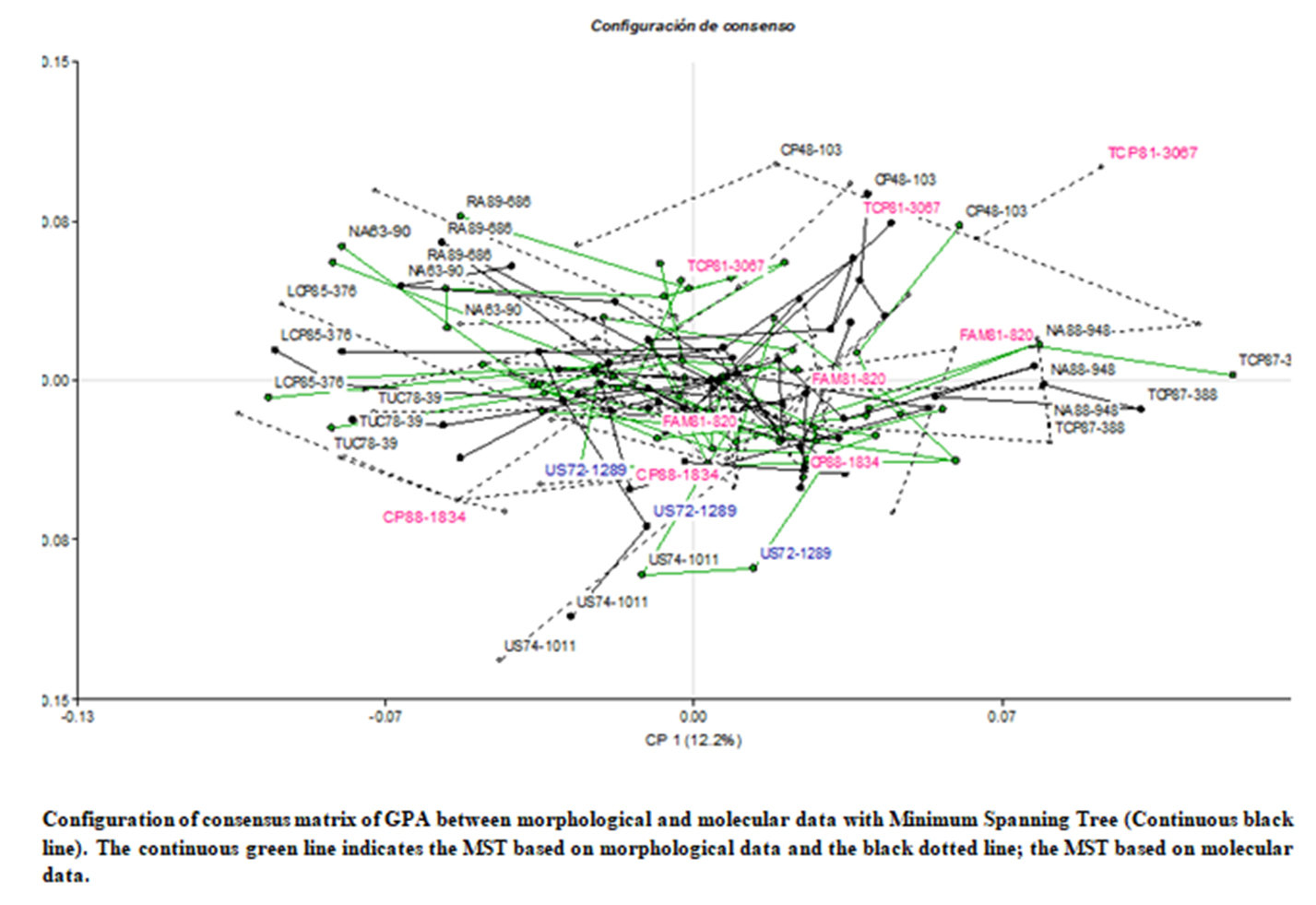Molecular versus morphological markers to describe variability in sugar cane (Saccharum officinarum) for germplasm management and conservation
Palabras clave:
análisis multivariado, caracteres morfológicos, SSR, caña de azúcar, variabilidad genéticaResumen

Sugarcane is one of the most important industrial crops in tropical and subtropical regions. INTA (Argentina) administrates a Sugarcane Germplasm Bank and carries out a breeding program. The current study was designed to assess the phenotypic and genetic diversity among 65 sugarcane accessions selected from the INTA. Clustering and ordination methods based on quantitative and qualitative morphological traits and SSR data were applied. Generalized Procrustes Analysis allowed evaluating the correlation between relationships established with both markers A good of fit between dendrograms and similarity matrices were revealed by high cophenetic coefficients (r=0.82, p<0.0001; r=0.73, p<0.0001; r=0.82, p<0.0001 for phenotypic quantitative, phenotypic qualitative and molecular data respectively). The presence of different reliable population structure was observed when considering different data sources. Procrustes allowed finding those accessions that should have been responsible for the low correlation found between the individual configurations (73%). Both morphologic and molecular markers resulted discriminative enough to differentiate among accessions. It was not possible, however, to correlate associations of markers with the origin of materials. Phenotypic and genetic distances based on morphology and molecular information serves to assist conservation and organization of collection of materials, and the choice of parent combinations for breeding purposes.
Highlights
- Although both morphologic and molecular markers resulted discriminative enough to differentiate among sugarcane accessions, it was not possible to correlate associations of markers with the origin of materials.
- The large number of pair-wise similarity coefficients with intermediate values determined a rather small number of nodes in clustering, which, reflects the near genetic origin of most of the materials investigated.
- Diversity detected for morphological descriptors is expected since they are not usually subjected to selection inbreeding.
Descargas

Descargas
Publicado
Cómo citar
Número
Sección
Licencia
Aquellos autores/as que tengan publicaciones con esta revista, aceptan las Políticas Editoriales.










.jpg)




